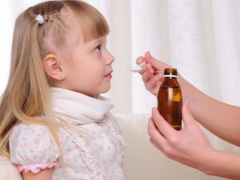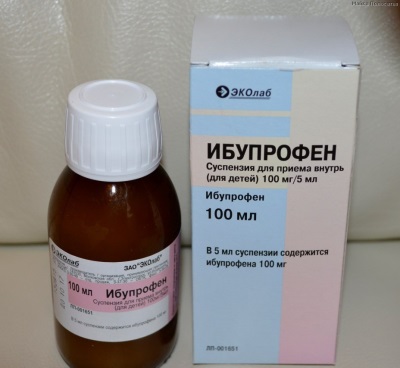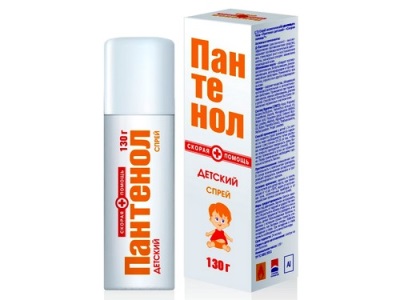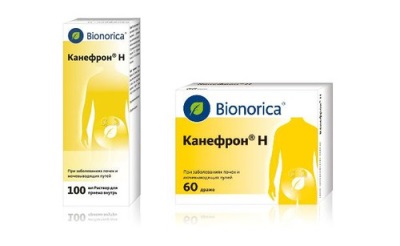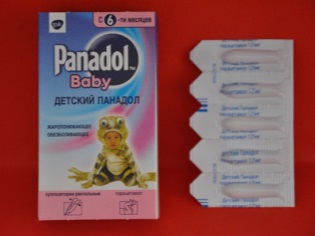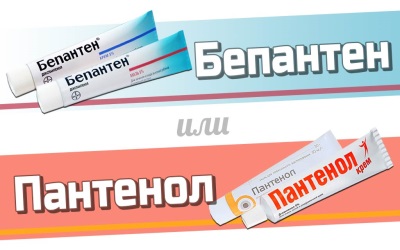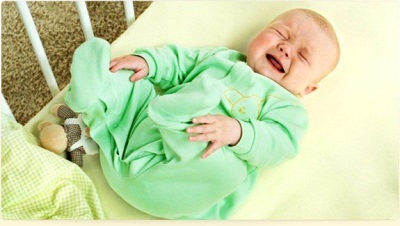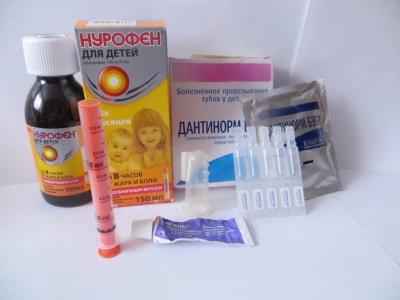Painkillers for children
Painkillers must be in the first aid kit of any family. Especially if children grow up in the house. The little goats are spontaneous people, they don’t ask when they get sick, they just get sick when no one expects it. Otitis and toothache, the temperature rose or the baby fell and was injured, a headache, throat, and muscles with a cold ... In all these and many other situations, parents should have on hand preparations for “emergency” care.
It is not always possible to urgently consult a doctor or call him at home, because the pain can overtake the crumbs on a day off, in nature, in the country, on a trip ... The complexity of the issue is that painkillers for adults cannot be given to babies. And even a good and experienced pharmacist will not be able to tell you about the existing children's drugs.
The fact is that dozens of new painkillers are released every year, the overwhelming mass of them is sold without prescriptions, and most likely you will be offered something popular, advertised in the pharmacy that everyone has heard about. Unfortunately, it’s not at all a fact that such a medicine will be suitable for your baby. So how to choose painkillers for children?
What are the?
Painkillers are drugs - analgesics that block pain syndrome and have no effect on other types of sensitivity (hearing, vision, smell, tactile functions, etc.).
Painkillers are divided into two groups. They are narcotic and non-narcotic.
The first group includes opiates, they work perfectly, eliminating almost all types of pain, be it a fracture or migraine, but with prolonged use cause physical dependence, addiction.
Non-narcotic analgesics, in addition to their direct responsibility - to fight pain, provide additional "services" to the human body - lower the temperature and have an anti-inflammatory effect. They do not cause drug addiction, but they are not capable of coping with any pain.
Mostly non-narcotic painkillers are effective for inflammatory pain - toothache or joint pain.
Narcotic analgesics of both vegetable and synthetic origin in pharmacies without a prescription cannot be bought. Yes, children do not need it, because such painkillers (Promedol, Morphine, Codeine, etc.) are used only in certain cases and almost always in hospitals:
- To alleviate the condition of seriously ill and dying people,
- In case of serious injuries (complex fractures),
- With ischemic pain (myocardial infarction, angina),
- With renal or hepatic colic,
- When pain shock,
- As premedication for anesthesia,
- With relief from postoperative pain.
Non-narcotic analgesics are available in pharmacies.
They help in the following cases:
- Toothache,
- Headache,
- Neuralgia,
- Heat,
- Otitis,
- Muscle and joint pain.
Non-narcotic analgesics include topical analgesics, antispasmodics, analgesic and antipyretic drugs, nonsteroidal anti-inflammatory drugs. They can be given to children in certain cases. Let's take a closer look at how to deal with children's pain.
How to act?
- Antispasmodics (eg, No-Shpa) - "force" the muscles to contract less, relieves spasm and pain goes away.
- Nonsteroidal anti-inflammatory drugs (Ibuprofen) - act on a more subtle level - fermentative. They do not allow active enzymes that stimulate the formation of prostaglandins, thromboxanes. The pain is thus destroyed in the very germ.
- Antipyretic analgesics (eg Paracetamol) quickly relieve the child from the heat, and in parallel act on the center of pain in the brain. As a result, both temperature and pain syndrome subside almost simultaneously.
- Analgesics local action Do not give pain impulse to spread from the focus of pain further. As you know, pain is a protective reaction of the body. And it begins in the nerve endings. If the pulse is interrupted, there is no pain.

Funds for children
Modern painkillers are available in various forms - syrups, tablets, solutions for injections, capsules, ointments, sprays.
When creating a home first-aid kit for a child, remember that children are eligible for medicines that meet certain criteria:
- Dosage form should be easy to use for the child. Choose ointments, drops, powders, suspensions and syrups. Older children can take a tablet form of drugs.
- The list of contraindications and side effects should be kept to a minimum. Weigh all possible risks, consult your doctor.
- Drugs should act quickly and as long as possible, but not accumulate in the body.
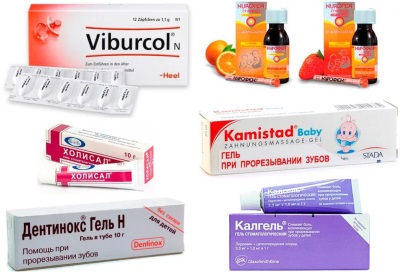
Most popular drugs
- Paracetamol. Analgesic, which grew more than one generation. It is included in the list of essential medicines. It is used on its own, as well as part of many other painkillers for children. It relieves moderate pain, slight inflammation, but very effectively lowers body temperature.
After taking it begins to act in 15-20 minutes. You can give this drug in syrup to babies who have reached the age of three months. Older children can take pills, but do not forget that Paracetamol should be taken with plenty of water. The drug is contraindicated in children with diseases of the stomach, pancreatitis, diseases of the duodenum, kidney and liver. Overdose is fraught with severe liver damage.
- Ibuprofen This is a nonsteroidal anti-inflammatory analgesic drug. Available in the form of suspension, tablets, syrup and rectal suppositories. Reduces temperature, reduces muscle pain. Helps with moderate toothache. Facilitates the condition of the child after vaccination.
It should not be given to children who have not reached the age of three months and low birth weight babies whose body weight is less than 6 kilograms. Ibuprofen is contraindicated in children with diseases of the gastrointestinal tract, and some acute illnesses of sight and hearing. Children up to 11-12 years old can be given medicine in the form of a syrup. Dosage suspension ibuprofen must be calculated by the doctor after controlling weighing the baby.
- Nurofen. This is a complete analogue of Ibuprofen. Babies from 3 months can be given in syrup and suspension. Older children - in pills. Nurofen is allowed to take with the relief of the suffering of the baby during teething. It lowers the temperature, eliminates mild headache, toothache, ear pain and muscle pain.
It begins to act half an hour after ingestion and continues for about 2 hours.It is produced not only in syrups, suppositories, tablets and capsules, but also in the form of a gel, suitable for external use. Nurofen in any dosage form should be taken with great caution to children with diseases of the stomach and intestines, asthma, eczema, renal or hepatic insufficiency.
- Nise. Nonsteroidal anti-inflammatory drug with a moderate analgesic effect. It can be given to children who have reached the age of 2 years (in the form of a suspension). The effect occurs half an hour after ingestion, and lasts about 12 hours. Most often, doctors advise to use Nise for muscle pain and pain in the joints, especially after injuries, sprains, bruises and even fractures. It is effective in rheumatoid arthritis.
For the general antipyretic and analgesic effect, you can take Nise in pill form, in suspension, for the treatment of injuries - there are also gels. However, they can not be applied to open wounds, bleeding abrasions.
Nise should be taken with great care to children suffering from diseases of the cardiovascular system, stomach, kidneys, as well as children who have a tendency to bleeding, diathesis and metabolic disorders. Nise in tablets with precautionary measures are allowed to take children who have reached 10-12 years of age.
- Panthenol - Regenerating spray or ointment with analgesic effect. It can be used by children of any age to eliminate a variety of pain - from severe scratches and diaper rash before burns, including solar. Contraindications - at least, only allergic reactions at the place of use of the drug. But they are extremely rare, and therefore Panthenol just have to be in the home first-aid kit of the family in which the mobile tomboy grows.
- Hexoral, Tantum Verde (sprays). Local drugs with analgesic action. They are prescribed to treat throat, tonsillitis, tonsillitis, stomatitis, and even periodontal disease. The analgesic effect of these drugs is not their main advantage. The preparations disinfect the sore throat and oral cavity, destroy harmful bacteria and microorganisms, restore the delicate mucous membrane. And the anesthetic effect is a nice bonus.
Hexoral can be taken by children from 3–4 years old, Tantum Verde can be used in the treatment of a child from birth if it is a spray. Tablets are only allowed for children over the age of 12-13. The dosage is determined by the doctor. Both drugs are used in dentistry.
- Otipaks, Otinum. Local anesthetic and anti-inflammatory drops containing lidocaine. They are great help to relieve children ear pain. It is no secret that otity- faithful satellites of childhood. Otipaks is allowed for children with earache from birth (1-2 drops each), babies from 1 to 2 years old (3 drops each), children of preschool age (4-5-6 years old) and schoolchildren (6-7-8 and etc. years) it is also suitable for use (4 drops three times a day).
Otinum can be used for children from 1 year.
- Canephron H is a medicine based on herbal ingredients. It is prescribed for the treatment of urinary system ailments. It has a good analgesic effect in the treatment of cystitis in children. Recommended for children from 6 years. Available in the form of tablets and drops. Drops of Canephron in some special cases, the doctor may prescribe and children under 6 years.
For newborns and children under 1 year
Sometimes there is a need to remove the pain of the smallest. First, do not try to pick up the drug for such crumbs on their own, this is fraught with serious consequences. Consult a pediatrician. Usually babies and babies are allowed to receive painkillers in the form of candles.
Paracetamol in the form of candles can be used to relieve heat and get rid of pain. Efferalgan, Panadol. The dosage is calculated taking into account the age and weight of the child. Enter the candle into the rectum gently, with clean hands, after putting the baby on its side or back. Older children can use the same drugs, but in the form of syrup or effervescent tablets, enriched with vitamin C.
Skin diseases, itching, diaper rash and burns to infants can be treated with creams or sprays Panthenol and Bepanten.
A sore throat in a child of the first year of life will remove Tantum Verde spray if they spray a baby's pacifier.
When ear pain to the baby will provide first aid drug Otipaks.
The difficulty is to understand what exactly hurts a child, because he cannot yet tell about his condition. Experienced parents recognize the reasons for the alleged features of the cry. With pains in the stomach - colic of the newborn - the baby cries out shrill and has little legs. When ear pain, the child alternates periods of sharp cry with whining. With a headache, the baby will be a long and protracted whimper. This is typical of most babies, but there are also individual signs according to which parents determine the indicators of the state of their crumbs.
So, let's summarize and save the following label:
Type and location of pain in a child | Pain medication |
Toothache | Paracetamol, Ibuprofen, Nurofen. |
Teething pain | |
Stomatitis and pain in the mouth | Calgel, Metrogil Dent, Kamistad, Tantum Verde, Hexoral. |
Headache (with flu, SARS, cold) | Paracetamol, Ibuprofen ", Nurofen |
Pain in the muscles and joints | Ibuprofen, nurofen, nise. |
Ear ache | |
Pain in the muscles with ARVI, flu | Paracetamol, Efferalgan, Panadol, Nurofen. |
Injuries, bruises, sprains, broken arms, with pain in the legs | Nurofen-gel, Nise and Nise-gel, spray Lidocainic |
Neuralgia | Nurofen-gel, Nise. |
Pain in burns, diaper rash | |
Sore throat | Hexoral, Tantum Verde |
Pain sensations in the "chickenpox" | Paracetamol |
Cystitis, pain during urination | Canephron N, Ibuprofen |
Infant colic |
The following video discusses in detail the topic of headache in children. The author will tell you what can be the causes of headaches and what drugs can help the child.
When should you not give painkillers to children?
There are situations in which in no case can you “feed” a child with painkillers. Otherwise, the doctor will be difficult to make the correct diagnosis and provide timely assistance. Among such "contraindications to use":
- Stomach ache. You already know that pharmaceutical analgesics available to you are not able to relieve such pains, and this is actually very good. Because the stomach just does not hurt. There is more than a good reason for this. Appendicitis, inflammation or injuries of internal organs - all this is a reason to call an ambulance, and not to drink analgesics.
- Headache, accompanied by drowsiness and delirium. This may be not just a headache, but manifestations of encephalitis. If the brain tissue is damaged, analgesics will only worsen the child's condition. The advice is the same - call the "emergency room".

- Pain of unknown etiology. This is when the baby himself can not really explain his condition. He claims that “it hurts here” and, at the same time, he shows the whole chest or the entire abdomen. Do not take on the difficult task of recognizing the cause of the pain of the crumbs.Do not give analgesics, so as not to "stifle" the important symptoms for the diagnostician. And just immediately do as in the two cases described above. Call the ambulance.
- If you are already taking analgesics for 5 days. This is a critical time. Taking more painkillers is harmful to health.
General tips for taking painkillers for children
- All children, without exception, are prohibited from taking Analgin. This previously very popular drug, since 1991, has been recognized as extremely undesirable for children under 15 years of age. It can provoke the so-called “Ray's syndrome” - a serious condition of liver failure with simultaneous brain damage, often ending in death.
- When taking painkillers do not need to be guided by the rule “One is good, but two is better!” And combine several drugs or exceed the dosage. This can end sadly.
- If the child is already taking any drugs or vitamins, be sure to check with your doctor. Independently take into account the degree of interaction of painkillers with those medicines that the baby already drinks or takes in injections is almost impossible. But the effect of the "mismatch" of ingredients can be very unexpected and unpleasant.
- Keep track of the shelf life of drugs in your first aid kit. Do not give your child overdue painkillers.
Tips of Dr. Komarovsky
Dr. Komarovsky, whose advice modern moms listen to so much, argues that it is irresponsible to anesthetize and beat the temperature every time a child has pain or fever. After all, temperature is the work of immunity, and pain is a defensive reaction. By supplying the children's organism with “heavy artillery” of painkillers, we, adults, to some extent interfere with its immunity to fight the disease.
But sometimes these drugs are still needed. For example, in babies, to avoid seizures. So, the best advice for children's pain sounds like this - call a doctor! Only he can determine why the pain arose, what caused it and how it is better to treat it. After all, pain is only an external manifestation of an internal problem. And analgesics do not cure, but the external symptoms "knock down".
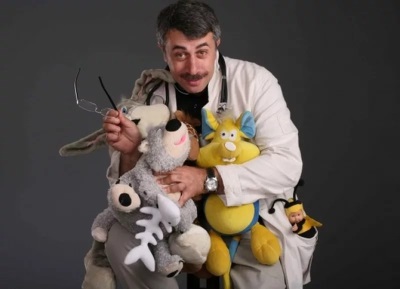
In order for the child to live for a long time and be healthy and happy, the “problem” needs to be treated. And in this without the help of a doctor can not do.
In the next video clip, Dr. Komarovsky will tell you how to give your child the first emergency aid for painful sensations of a different nature.
Folk anesthesia methods
There are many popular ways to cope with children's pain:
- Winning a toothache will help gruel of onions and garlic, attached to the sore spot.
- Poultice of plantains and pine resin helps to relieve pain and get rid of the flux.
- To reduce the high temperature and relieve muscle pain, you can rub the child with vodka.
- Horseradish leaves tied to a sore leg or arm help relieve joint pain.
- Compresses with grated radish and honey effectively relieve pain after bruises and injuries.
- Outside otitis in a baby can be defeated with a slurry of aloe and kalanchoe leaves. The turunda smeared with such structure is inserted into a sick ear.
- To relieve the pain of cystitis will help sedentary warm baths and a decoction of parsley, which can give the child a drink.
- Headache will help remove saline compresses, fresh onions and lemon peel.
In conclusion, I would like to say that many leading pediatricians of the world believe that it is unsafe in principle to take painkillers for children. This one is like a life preserver - it's good when you have it at hand, but hoping to swim to your destination on it is naive and unwise.
